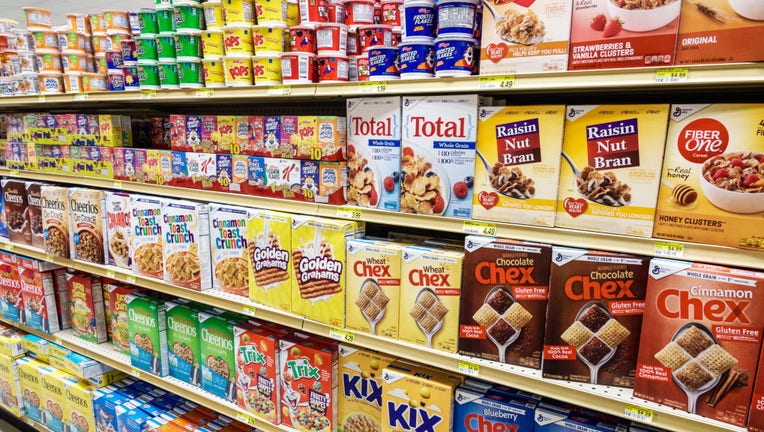
article
FILE IMAGE – The breakfast cereal aisle is pictured at a grocery store in Florida in an undated file image. (Photo by: Jeffrey Greenberg/Education Images/Universal Images Group via Getty Images)
AUSTIN, Texas – A groundbreaking Texas law is set to shake up the food industry by mandating **warning labels** on products containing specific food additives. These labels will prominently declare that the additives are “**not recommended for human consumption** by health authorities in Australia, Canada, the European Union, or the United Kingdom.” Get ready to rethink what’s on your dinner plate!
The Compliance Challenge Ahead
The newly introduced labels must be placed in a **”prominent and reasonably visible”** location, ensuring that consumers can easily see the warning amid the colorful packaging. **This is a first for the U.S.**, targeting additives rather than just nutrients like sugar or saturated fat, aiming to transform American dietary habits.
Food manufacturers will face critical decisions: **should they reformulate products** to avoid these labels, add the required language, remove certain products from shelves, or fight back through legal channels?
A Wide-range Impact on Popular Snacks
This law has implications for popular snacks such as **Doritos**, **M&Ms**, and **Trix cereal**, all of which utilize synthetic food dyes. Importantly, the legislation applies only to packages produced after **January 1, 2027**.
Opposition from Major Brands
The **Consumer Brands Association**, representing giants like General Mills and PepsiCo, had previously urged Texas Governor Abbott to veto the bill. They argue that the labeling requirements could result in **legal risks, consumer confusion, and increased costs**. As John Hewitt, a senior vice president of state affairs, expressed, the warning language is not only **inaccurate** but also problematic for brands.
Understanding the Additive Debate
The law specifically targets ingredients like **partially hydrogenated oils**, **Red Dye No. 4**, and **Red Dye No. 3**—additives that have raised eyebrows and are banned or heavily restricted in various countries.
Globally, regulators adopt a cautious stance on food additives; if there’s uncertainty about a product’s safety, it can be banned or restricted until proven safe. In the U.S., the approach typically allows products on the market unless there’s clear and blatant risk of harm.
Hooking into Consumer Awareness
A staggering **40+ ingredients** could potentially trigger the warning label under this new initiative. By raising consumer awareness, Texas is pushing for a much-needed dialogue around food safety. Some of the highlighted ingredients include:
- Acetylated esters of mono- and diglycerides
- Azodicarbonamide (ADA)
- Butylated hydroxyanisole (BHA)
- Red 40 (CAS 25956-17-6)
- Yellow 5 (CAS 1934-21-0)
Broader Impacts Beyond Food
In addition to the new food labeling requirements, **SB 25** also promotes healthier lifestyles among Texas’s youth. Schools are encouraged to provide **more physical activity**, increasing the requirement from four semesters to six for grades six through eight.
Introducing Nutrition Education
And it’s not just about physical activity—nutrition education is also getting a facelift. Under this law, undergraduate students in Texas will now be mandated to take a **nutrition education** class designed by the newly appointed Texas Nutrition Advisory Committee, which will comprise experts from diverse health disciplines.
Final Thoughts
Texas is blazing a trail for consumer safety and health awareness in the food industry. With added focus on transparency, consumers will soon have more information at their fingertips, enabling them to make **informed food choices** moving forward. To stay updated, keep an eye on developments in this evolving landscape.
The Source: Insights on Texas’s new food labeling law are sourced from the Texas Legislature, prior FOX 7 coverage, and information regarding food additives provided by the Associated Press.





